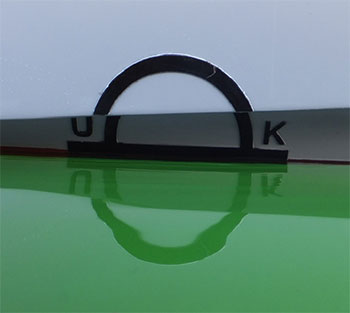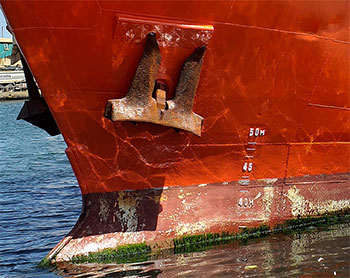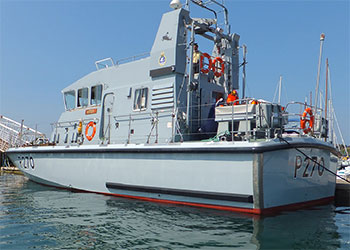
How to prepare your vessel for a lightship survey
A lightship survey may be undertaken as part of an inclining test, or
in order to ascertain that the vessel condition remains within certain
parameters compared with previous test results. Generally this means that
the lightship weight should be within 2% of previous test results, and the
LCG should deviate by no more than 1% of the length between perpendiculars
(LBP).
The lightship condition is defined as:
| 'The vessel complete and ready for service in every respect, including permanent ballast, spare parts, lubricating oil, and working stores but is without fuel, cargo, drinking or washing water, officers, crew, passengers, their effects, temporary ballast or any other variable load.'' |

The survey should be carried out where possible in a wet dock basin to provide stable conditions and minimal disturbance from passing craft. Where the survey may be affected by a tidal stream or current it may need to be timed to coincide with slack water, and there should be no risk of grounding during the test. The ship should be complete or virtually so. An accurate list of items to be added, deducted, or relocated after the survey should be prepared and their weights and positions as recorded agreed by the surveyor. Such items, however, should be reduced to the absolute minimum.
The surveyor should thoroughly inspect the ship to ensure that all items on the list above are accurately assessed and check that any omissions are taken into account. The ship should be generally clean and tidy. Shipyard equipment, staging and debris should be removed as far as practicable. Suspended weights including boats, anchors, derricks, vehicle ramps and decks etc. should be secured in their seagoing positions. Tank top, open floored spaces and bilges in the machinery space and elsewhere should be clean and dry. Loose water and oil should be removed. In general, machinery, piping systems, boilers and associated equipment should be at operating levels. Keys to all locked compartments should be available.
Tanks
The number of tanks containing liquids during the survey should be kept to a minimum. As a guide the total weight of liquids should not exceed 25% of the lightweight. This may be exceeded where it is desirable to reduce the trim of the vessel.
The disposition of all liquids required to be on board should be agreed by the surveyor, prior to the survey.
Where it is agreed that particular tanks may contain liquid, these must either be pressed full or the level must be such that the free surface effect can be accurately determined.
Cross connections between port and starboard tanks containing liquids should be checked to ensure that the control valves are closed.

